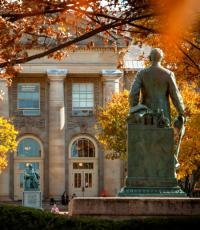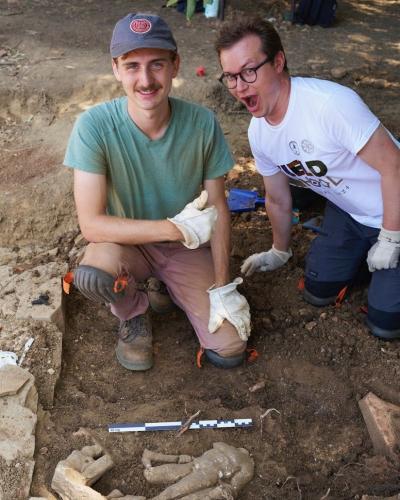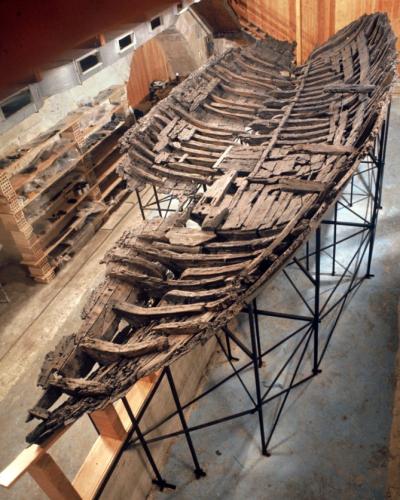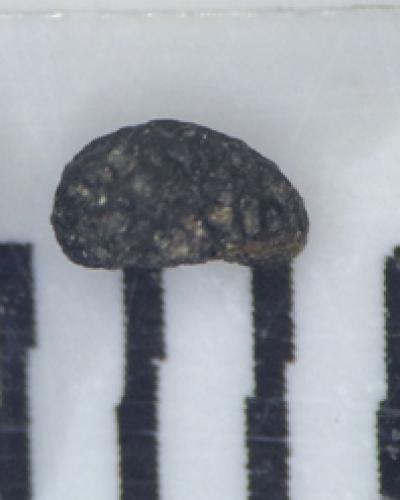On a warm fall day last year, Dr. Maia Dedrick stops working for a moment to take in her surroundings. She is the resident paleoethnobotanist on the St. James AME Zion Church excavation in Ithaca, NY, hoping to uncover botanical remains related to the project’s focus on the church’s participation as a site along the Underground Railroad. The afternoon church choir practice was in full swing, and their harmonies carried from the sanctuary down to the excavation site. Two young boys were discovering the awesome power of manning Dr. Dedrick’s botanical flotation device as an excuse to play in muddy water (with some learning involved). It was her picture-perfect image of community-oriented archaeology.
I first met Dr. Dedrick during the opening fieldwork session of this year’s excavation season. I was both intrigued and intimidated by her title as a paleoethnobotanist (and maybe a bit jealous since the paleoethnobotany class I wanted to take was full before I could enroll). The next time I was on site we were assigned to the same unit – finally, my chance to begin and continue learning about the subset of archaeology I so desperately wanted to understand. Once she agreed to a formal interview for this project, I began with my most pressing question:
MT: So, what are the differences between paleobotany and paleoethnobotany?
MD: A lot of times, people in this field are often very specific about language. But people have their preferences, I get it. You’ll hear two terms in particular that are used interchangeably in archaeology, which are archaeobotany and paleoethnobotany. Archaeobotany is more commonly used in Europe and other parts of the world; paleoethnobotany really has more of a basis in the United States and Canada. I guess paleoethnobotany really emphasizes the fact that it’s the study of human interactions with plants; that’s where the “ethno” comes from.
MT: So do you consider yourself an ethnobotanist or a paleoethnobotanist? Well, I guess you do a bit of both?
MD: Yeah, my focus has been paleoethnobotany. I primarily work with plants from the past. But I’ve had the opportunity, luckily, with my field research to work with a community in Yucatan, Mexico to talk to people about their gardening practices today and integrate plant surveys of contemporary gardens. So that’s an example where ethnobotany would come into play. Paleoethnobotanists are constantly drawing on information that we have from the contemporary time about uses of plants because the ways that people know to use plants today can coincide with how they were used in the past, even if there’s not a direct overlap [with groups of peoples or plant species].
Having Dr. Dedrick remind me that human behaviors –ethno– were at the center of seemingly daunting plant science studies was reassuring. In the context of St. James AME Church and the Underground Railroad, paleoethnobotany is an important tool to unveil the foods potentially consumed by those traveling along the Underground Railroad, and/or those prepared by locals to support this transient population. Especially considering that people who traveled along the Underground Railroad came from a region where different plants and fruits were cultivated compared with Upstate New York, potential paleobotanical finds may pinpoint where passengers who stopped at the church came from. Botanical remains that Dr. Dedrick analyzes from the site will add to this larger picture of what life at St. James AME Church was like, and hopefully answer some of these questions. As we continued to chat, I hoped that Dr. Dedrick would tell me that St. James AME Zion Church seems like the site for the next great paleobotanical discovery.
MD: Oh boy… I just try to have a very open mind [going into excavations]. I know that if I keep my expectations “we’ll see,” then I’ll always be excited. I can also be really excited about things that aren’t very ancient. I’d be happy finding something from fifty years ago and putting that into conversation with oral histories from the church and those that have been recorded.
MT: Yeah, I feel that. Even Sam [our teacher for the archaeology course related to the site] tells us to try and keep our expectations low, but secretly on the side my classmates and I are all like, “oh my goodness, one day we’re gonna strike gold and a whole floor is going to be there!”
MD: Definitely. And I always want to find seeds; I’ve been finding seeds, so that works out!
Upon her telling me that seeds found at the site of particular interest, my heart dropped. I couldn’t help but think about the loads of dirt I’d carelessly discarded after sifting for larger artifacts. How many seeds had I potentially thrown away? What would I do the next time I went to excavate? I couldn’t possibly spend all day searching for a single seed. Or, should I? I thought to myself, not only did I barely understand paleoethnobotany, but now I’ve ruined everything by throwing away all of Dr. Dedrick’s seeds. When was someone going to tell me that I also needed to look for seeds! I tried to remain calm as I asked about the seeds she’d found so far…
MD: In this case, two samples were immediately identifiable and there were about four of each, elderberry and what could be raspberry or blackberry seeds. In any case, my first thought was that they’d be great for jam making. And I’m hoping that further research will be…fruitful!
After Dr. Dedrick excitedly described the process of classifying the different berry seeds based on genera and working with eager students, I confessed to my archaeological crimes of overlooking her beloved remains.
MT: I’d love it if you would talk about the flotation system used on site, and I don’t know if this will be answered in that question, but how do you find raspberry seeds in a pile of dirt? I’m thinking about all the dirt I’ve been trowling out of the units, and if there was a raspberry seed in there I would absolutely not know it.
After a laugh, she reassured me that this would not be the downfall of the entire excavation.
MD: Yeah, so we actually use a very simple system–but what’s simple can still be effective. In this case, we take samples from the site. We’re looking for two different kinds of samples, for the most part, what we’re taking is called scatter samples. So we’re getting a little bit of soil from across loci in a specific context so we understand what it means in 3D space. But we’re more careful with depth because that can be more easily linked to chronological phases. We’ve been using special bags to dry out the soil, and even then I can only really say that carbonized [burned] seeds are ancient, because uncarbonized seeds are eaten so quickly by critters and all the things in the soil. The seeds I told you about earlier are actually uncarbonized, but I still think the seeds we’ve found are older and not from, like, yesterday. So you have to think about the environment and common practices of the region you’re working in. We might also take point samples, mostly from an ashy deposit. Someone noticed a soil change that might have been a deposit from a hearth–which increases the likelihood of finding burned materials.
I was so relieved to learn about point samples; I had not come across any ashy deposits in the units and loci I worked on, so I breathed a sigh of relief knowing that I likely didn’t jeopardize anything. Dr. Dedrick continued on to describe what happens after the samples have dried, with the second step being to float the samples in water. The sample is put in a bucket, filled with water, then mixed together to see what floats. Floral remains (like seeds) will often float, which make them easier to separate from the rest of the sample. The floating remnants are then transferred to a very small screen using veil fabric, where they are further sorted. This process is repeated a few times to ensure the majority of floating items are retrieved. The findings that are collected after the veil fabric phase are then analyzed under a microscope. However, this isn’t the end for the objects that sank earlier in the process. Those pieces, called “heavy fraction” (compared with the floating finds which are “light fraction”) are then placed into mosquito netting and sorted to potentially recover any bones, artifacts, or nutshells.
MD: So to answer your question, yes, you won’t see a raspberry seed as you’re excavating. But that’s why we go through the extra hassle of floating and using a microscope. And my observation has also been that areas where preservation is not as good, you’re more likely to find small seeds than large seeds. So you also have to think about what is missing in the picture. But it’s also really cool that you may be more likely to find the small things.
In church, it is often taught that “faith the size of a mustard seed” is all that is needed to make any want or need a reality. As the success of this community-engaged project continues, it seems that for now, faith the size of a berry seed will keep us going just fine.






